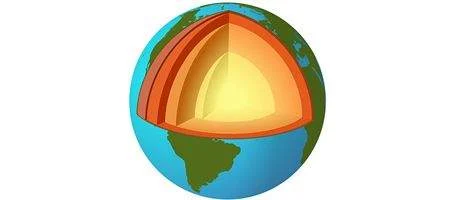The inner core of the Earth appears to be simultaneously melting and freezing, because of heat circulation in the rocky mantle that covers it.

Researchers from the University of Leeds, UC San Diego and the Indian Institute of Technology say their findings could help explain how the inner core formed and how the outer core acts as a geodynamo, generating the planet’s magnetic field.
“Our new model provides a fairly simple explanation to some of the measurements that have puzzled scientists for years,” says study co-author Dr Jon Mound from the University of Leeds.
“It suggests that the whole dynamics of the Earth’s core are in some way linked to plate tectonics, which isn’t at all obvious from surface observations.”
The Earth’s inner core is made of solid iron, surrounded by a highly dynamic outer core that consists mainly of a liquid iron-nickel alloy. Outside that is a highly viscous mantle and a solid crust that forms the surface.
Over billions of years, the Earth has cooled, partly freezing the molten iron. The heat given off as the core gets cooler flows outwards through convection. And it’s this escaping heat that powers the geodynamo and, coupled with the spinning of the Earth, generates the magnetic field.
Using a computer model of convection in the outer core, together with seismology data, the new research shows that heat flow varies depending on the structure of the overlying mantle. In some places, heat is forced from the mantle back into the core, causing localised melting.
“Our model allows us to explain some seismic measurements which have shown that there is a dense layer of liquid surrounding the inner core,” says co-author Dr Sebastian Rost from the University of Leeds.
“The localised melting theory could also explain other seismic observations, for example why seismic waves from earthquakes travel faster through some parts of the core than others.”






